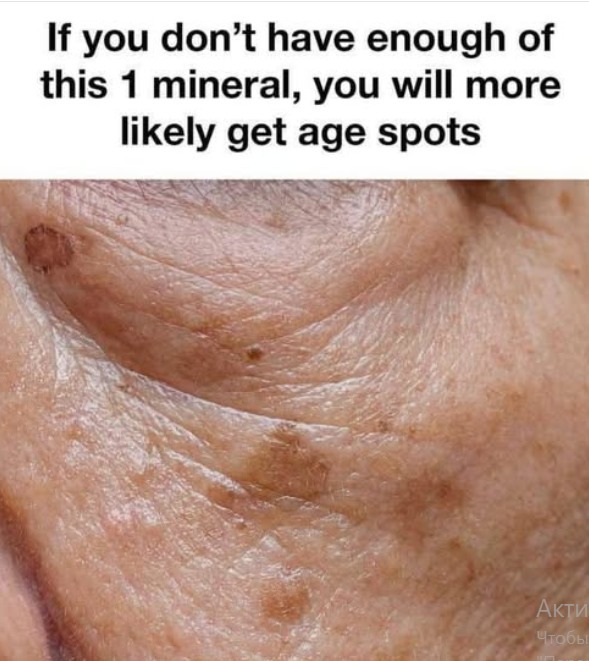Aging is both beautiful and a privilege. Though we frequently moan about old age and the associated problems, the reality is that many of us are not fortunate enough to reach an age when we may complain about these issues. That being said, there is a distinction to be made between fighting and stressing about our age and taking steps to ensure that as we age, we do it in a way that preserves our health and vitality. Our skin is an important element of that. One of the most prevalent complaints about aging skin, which makes many people feel self-conscious, is what we call age spots.

Fortunately, there are numerous methods for preventing and treating unsightly spots, allowing you to feel confident in your skin and keep it healthy far into old age. These darker blotches on the skin, also known as liver spots, sun spots, or solar lentigines, appear as we become older. They are more frequent in adults over the age of 50, although they can also emerge in younger people who have been exposed to a lot of sunlight. Age spots are not necessarily harmful to your health and can be removed cosmetically. However, if you have a number of these liver spots, it can be difficult to recognize lesions that could be fatal, such as melanoma.
Fortunately, the same factor that causes age spots also causes skin cancer, and the treatment for both disorders is largely the same. Why are they sometimes referred to as ‘liver spots’? Age spots are also referred to as liver spots. This is owing to the long-held idea that they were caused by liver disorders. However, the name “liver spot” is somewhat misleading, as we now know that age spots are not associated with liver function or disease. The association most likely stemmed from a misunderstanding of the true source of these skin lesions, which is sun exposure rather than liver health.
Age spots are generally caused by years of cumulative sun exposure, which results in localized melanin overproduction in the skin. As a result, the more correct terms “age spot” or’sun spot’ are frequently used in dermatology to characterize these pigmented skin lesions. Causes of Aging Spots. These hyperpigmented spots grow as a result of prolonged UV radiation exposure, often known as sunlight. They are essentially overactive pigment cells that respond to light exposure by purposefully darkening your skin to shield you from too much sun.
They are especially common in those with lighter skin tones and in locations with high sun exposure. These include the shoulders, neck, face, hands, and possibly the arms and legs. Melanin clumping, also known as excessive melanin concentrations, contributes to age spots. Again, this is frequently a response to sun exposure. The sun isn’t the sole culprit, though. Sun spots can be caused by using tanning lamps and tanning beds, both of which emit UV rays.
Your history of sun exposure and sunburn might influence the number of age spots you develop, as well as their size and color. As previously stated, this is what can lead to the development of melanoma, also known as skin cancer. This is why preventing age spots is so crucial. Not necessarily to age ‘well’, as society would have it, but to protect oneself from one of the world’s deadliest, yet most avoidable, malignancies.

Symptoms and diagnoses. Age spots typically appear as flat, oval-shaped regions with enhanced pigmentation. The color might vary from tan to dark brown. They also vary in size, from microscopic freckles to considerably bigger areas. They can eventually gather together. Unlike freckles, they do not diminish with less UV exposure. While sun spots are not harmful to your health, it is critical to be able to distinguish between innocuous liver spots and potentially malignant growths.
Spots that are really dark or black may be malignant. This also applies to any cosmetic changes, such as size, shape, color, or texture. Spots with peculiar hue, ragged edges, or bleeding should be examined by a medical practitioner. If you detect changes in your skin, consult your doctor or dermatologist. Treatments for age spots.
As previously stated, age spots are not hazardous and do not require treatment. If you don’t like how they seem, there are steps you may take to alter their appearance. They are relatively easy to eliminate or lighten cosmetically.

All cosmetic treatments, however, should be performed by a professional, certified dermatologist. This normally involves an initial consultation in which you discuss your skin’s needs with them, and they will assist you in developing a safe, effective, and realistic action plan. Cosmetic treatments for aging spots include. Chemical peels. Chemical peels are a popular cosmetic technique that improves the look of age spots and other skin imperfections. A chemical peel involves applying a chemical solution to the skin, causing the upper layers to slough or peel off.
This displays the softer, less pigmented skin below. The chemical solution used in the peel can vary in strength, with superficial peels targeting moderate discolouration and deeper peels penetrating deeper to address more serious pigmentation concerns such as age spots. Chemical peels help to remove sun spots, reduce pigmentation, and improve skin tone and texture by increasing skin cell turnover and encouraging collagen formation. Again, this is a technique that should only be performed by a qualified dermatologist.
